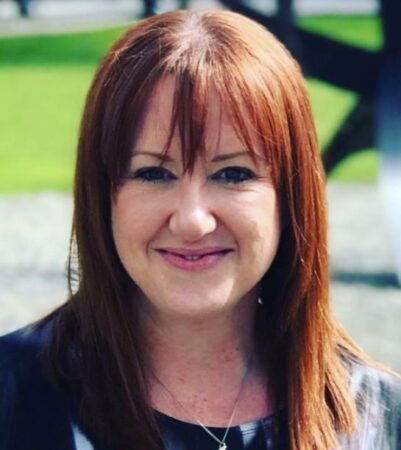Home News & Views Surviving Hospital #TreatMeWell
Surviving Hospital #TreatMeWell
Sally Wilson, Matron for vulnerable patients and safeguarding adults lead, George Eliot Hospital

The notion of ‘surviving hospital ’ may sound an emotive turn of phrase, but the hospital environment can be scary at times for all patients; harsh lights, strange sounds and smells. When you have a learning disability and/or additional sensory impairment this fear is amplified and many people with learning disabilities who are able to describe their hospital experiences focus on fear and not understanding what was happening to them.
I was asked to discuss this at a recent conference: Positive Choices and Positive Commitment 2018 (#PCPC18 for Twitter users) and give a whistle stop tour of how learning disability nurses can support people with learning disabilities to maximise admission avoidance and when admitted, to survive in hospital.
The first key word for me is for learning disability nurses (LDNs) to be ‘clinical’ and maximise admission avoidance through the baseline monitoring of health and therefore early identification of any deterioration. Learn and be confident in routine observations, use the National Early Warning Score (NEWS) to assess the people in your care. It is also really worth pursuing a post registration health assessment course so community learning disability nurses (CLDNs) can deliver autoscopic examinations (impacted ear wax is a huge undetected and easily reversible cause of poor health), chest examinations (we know respiratory disease is major cause of premature death for people with learning disabilities) and continence/constipation assessments (constipation is frequently ignored but so easily treated) amongst other simple health assessments which can maximise health and reduce risk of admission to hospital.
We also need to really work on improving health promotion, health education, benefits of exercise for people with learning disabilities and their carers and/or relatives. CLDNs are in a great place to be leaders in the development and delivery of clinical education for support workers and family carers.
Learning disability nurses must be clinical nurses.
When avoiding admission is not an option, there are fundamentally two types of acute admission, elective (planned) or emergency. Elective admissions can be well organised and coordinated to ensure a positive pathway and good outcomes. Learning disability nurses are fundamental to this success as they are best placed to liaise with secondary care providers to make desensitisation appointments and support at every step of the journey. LDNs are best placed to support the development and completion of quality hospital passports which provide valuable information for acute nursing staff. LDNs are excellent collaborators. LDNs know the importance of working in a multi-professional way to achieve the best outcomes and we are experts in the assessment and application of the Mental Capacity Act and the facilitation of reasonable adjustments.
Reasonable adjustments can be small and simple to deliver on, for example the first appointment of the day, or a double appointment slot. However there are some people with learning disabilities who require significant reasonable adjustments and complex planning to ensure they are able to receive their prescribed treatment. I have been involved with people who needed the theatre team to put t-shirts on over their scrubs to minimise a uniform phobia, general anaesthesia being inducted via gas while the person was sat up in their regular clothes, while a team of moving and handling experts were lurking behind ready to support them to lie down. Once safely asleep, clothes were removed (we had an identical set of clothes waiting in recovery) and the person was able to have the surgery they needed, along with full blood tests and a dental examination. Once in recovery, staff known to the person were waiting for them to wake up and were there to support throughout. In my previous role as an Acute Liaison Nurse (ALN) I have held hands with people while they are in MRI scanners, I have had my blood taken and my arm plastered to demonstrate procedures, I have made bespoke care plans and picture information sheets for patients in my care. There are so many examples of reasonable adjustments in practice this subject is worthy of a blog all of its own!
Learning disability nurses must be creative nurses.
Emergency admissions have always been the most challenging to effectively manage as it is crisis management and acute assessment. Learning disability nurses who regularly support emergency admissions must make friends with their Emergency Department (ED) matrons and sisters. All nurses, from whichever branch want to do the right thing for their patients, but confidence and competence are harder to build and maintain when they do not regularly see patients with learning disabilities. Work with ED matron and sisters to develop a fast track assessment pathway for patients with learning disabilities. If there’s a suitable quiet separate room in the ED, negotiate the use of this for patients who may be struggling with the noise levels in a busy ED. Make sure the hospital passport is there and is up to date and negotiate any additional support the person will need if admitted.
This is also the time to get acute staff thinking about the Mental Capacity Act and best interests principles so they can effectively and legally deliver quality care.
Once the person is on a ward, an ALN is best placed to liaise with nursing staff and carers/relatives to ensure that everyone is working together. It is concerning that in parts of the UK there is a reduction in the Acute Liaison service, as this is, in my opinion, a vital role for people with learning disabilities. The ALN can ascertain if there are any specific ways the person likes to eat/wash/mobilise/take medication etc and then support the ward staff in the delivery of this. They can also establish and support with communication plans and discharge care planning. ALNs are collaborators, they bring together hospital and community staff to plan and deliver acute care, rehabilitation and post-discharge follow up support to people with learning disabilities and their care teams.
Learning disability nurses must be collaborative nurses.
And once the person is discharged home, LDNs are a key part of the follow up team, updating hospital passports and care plans, advising carers about early warning signs of deterioration, teaching carers how to manage any new condition the person is now living with and supporting the person and their carers to adjust to any changes. It is at this point that the role of the LDN reverts back to admission avoidance, baseline monitoring and health promotion and education for all.
Follow this link for Mencap’s Treat Me Well campaign.
And this link for a short video on what it might feel like for a person with a learning disability to go to hospital.
Comments are closed.

